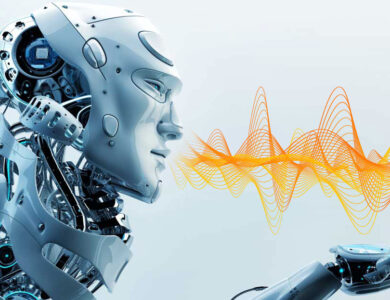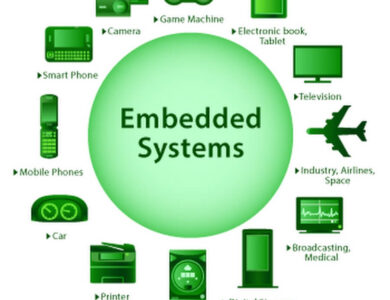
UR Robots are machines that can perform simple tasks, but they don’t have emotions. In the past, many jobs that involved heavy lifting and physical labor were filled by humans. However, robots are becoming more useful in industrial and domestic settings because they can complete tasks faster than humans.
The term “robot” has a long, complicated history. Its roots can be traced back to the 19th century when industrialists began experimenting with steam engines that could be used for tasks such as heavy lifting and drilling.
This led to the invention of robots like Cylinder No. 1 (1864), which could operate independently of humans; however, its design made it unable to make any decisions on its own or perform complex tasks like moving around an object to complete a task at hand.
In the 20th century, robots were used primarily within factories—but they weren’t always reliable or safe around humans or other machines because they lacked self-awareness or intelligence: they didn’t understand how their actions affected others around them! Over time, though…
The robots of UR
UR is a place where robots can live and work. It is a network of autonomous cities, each with its own identity and history. Robots there are free to be themselves—to follow their interests or make new ones as they see fit.
Robots in UR have access to a vast array of resources: from energy sources like solar panels on rooftops or wind turbines on hillsides, from raw materials such as metal ore deposits beneath the ground, and even access to water itself!.
It only takes a little imagination to see how this could lead us toward an age where our needs are met by machines rather than humans themselves.
The Basics of Robot Programming
In this section, you’ll learn the basics of robot programming.
Robots are computers with software that control their actions.
The first step in learning how to program robots is understanding what makes them tick—the different components and how they work together to achieve your desired results.
Using a skeleton script to create a basic robot.
You can use the skeleton script to create a basic robot.
The skeleton script is an easy way to start making your robots, and it will help you learn how to program them in Python. It gives you all the pieces needed for building a robot from scratch:
- A body (a rectangle)
- Wheels (two circles)
- Arms and legs (circles)
Moving from a skeleton script to a new scene with the Dinobot.
Moving from a skeleton script to a new scene with the Dinobot.
The first step is to ensure you have all your files in order, including your project file and any external assets that need to be included. You can also check out our [Getting Started](doc:getting-started) guide for more information on how to set up your project file. Once this is done, open up your scene and double-click on it to open its properties panel:
- Change Directory: This will take us to our root folder (which we’ll call “robot_c”). We’re going here because we want access to everything related to making this robot move around without too much fussing around with code!
Customizing the dinoBot’s skeletal structure.
To customize your dinoBot, you must assign it a name and create a new skeleton. To do this:
- Select “Skeletons” from the items menu on the left-hand side of your screen (Fig 1).
- Click on any space in this menu where there is no skeleton yet—there should only be one such section: “New Skeleton.”
- Name your new skeleton, whatever you like, then click “New Body.” This will bring up an image showing how various parts of your body can be connected into one giant robot body!
Creating custom attributes for your robots.
- Custom attributes
Robots can be given custom attributes to make them stand out. For instance, you could create a robot that only works with certain technology or materials. This will help you avoid situations where your robots try to use something incompatible with their programming.
Modifying skeletons for UR characters with the dinoBot and Base FX (BFX) Editor.
You can modify your character’s skeleton in the Dinobot Editor. The BFX Editor is used for creating new meshes and animations, but it also has a lot of tools for modifying existing ones. Both editors are available as free downloads from our website!
We can create robots with UR!
You can create robots with UR! We’ll show you some of the game’s features and how it works.
There are a lot of different types of robots.
There are a lot of different types of robots. Some are designed to help people, like the Roomba vacuum cleaner, while others are used for dangerous purposes such as defense or construction.
The most common type is a humanoid robot that looks like you or me and can walk on two legs like us (or in funny ways). The best example is Baxter from Star Trek: The Next Generation, who has been around since 1992!
They have different purposes, and they can be used in different ways.
Robotic technology has been around for decades, but it’s only recently that we’ve had the opportunity to use it daily. Robots have been used for industrial purposes and military applications, but they’ve also been used as entertainment devices and companions.
Robots vary from simple systems that mimic human movement to complex ones capable of performing complex tasks without input from their human counterparts.
They can be programmed in various ways, and each has a different purpose or set of skills that make them useful for certain jobs.
Some robots are made to perform a specific task, while others are meant to help people.
But what about robots? Are they just machines that perform a specific task, or are they meant to help people?
In some cases, it’s both. Some robots are made to perform a specific task, while others are meant to help people. For example:
- A robot vacuum cleaner can be used in homes and offices because it cleans up dirt and dust on hard floors without human assistance.
- A personal assistant robot like Pepper (the “girlfriend” bot) can provide much-needed assistance with daily tasks such as cooking dinner or grocery shopping—even if you don’t want her around all the time!
In the past, many jobs that involved heavy lifting and physical labor were filled by humans.
In the past, many jobs that involved heavy lifting and physical labor were filled by humans. But now we have robots to take over these jobs.
Robots are designed to do all sorts of tasks that would be too difficult or expensive for humans to perform without. They can easily lift heavy objects, move around precisely, and don’t need breaks like ours!
There are many different types of robots, but all make life easier.
There are many different types of robots, but all make life easier. They can do everything from taking groceries to parking your car to ensuring you don’t fall asleep in front of the TV at night. Robots are also used for jobs humans find boring or repetitive, like manufacturing parts that need assembly on an assembly line or cleaning up after accidents at work sites where humans were injured (like nuclear power plants).
Robots have been around since the 1940s when they were first developed by scientists working with Howard Aiken at Harvard University and J. Bussard, who worked at Bell Labs in New Jersey (a division of AT&T).
Robots are machines that can perform simple tasks.
Robots are machines that can perform simple tasks. They have been used in industry for many years, but the use of robots has increased dramatically in recent years.
Robots perform repetitive tasks faster and more efficiently than humans, making them ideal for many applications, including manufacturing, assembly lines, and mining.
Although robots can be used for a variety of tasks, practical applications of robots are limited.
Robots are often used in manufacturing, but there are more efficient ways to do things. For example, robots are expensive and difficult to maintain.
They require a lot of power and space for their motors. Their delicate parts — such as wheels and hands — also require regular maintenance or replacement if they break down because of wear and tear after some time.
Robots can be programmed with very specific tasks so that they can complete these tasks without human intervention; however, this isn’t always feasible because it would take too long for a robot worker (or even one worker) alone on an assembly line full of other workers who need their attention constantly throughout the production process before anything gets completed at all!
The history of robots went back several centuries and began with simple mechanical toys.
The history of robots goes back several centuries and began with simple mechanical toys. A robot is an autonomous machine that can perform physical tasks, especially in an industrial or manufacturing setting.
Robots have many uses in science and industry, including information technology, construction, agriculture, and transportation.
The word “robot” was first known in Karel Capek’s 1921 play R.U.’s Universal Robot (R.U.: Re Vzdusný Robítek). The term “robot” was derived from Gogol’s 1842 short story “The Overcoat.” It gained popularity after World War II when the Allies used it for their robotic weapons, such as Colossus computers, which played a crucial role during the war against Nazi Germany.[1][2]
Robots are becoming more useful in both industrial and domestic settings.
Robots are becoming more useful in both industrial and domestic settings.
- The technology is improving, making robots more capable and easier to use.
- Robots are being used for tasks that humans once did. They can help with things like cleaning, cooking, or even childcare.
Robots are useful tools that will have a big impact on our future.
Robots are useful tools that will have a big impact on our future.
Robots are how things work today and will be how things work tomorrow.
Robots don’t just do stuff for us; they also help us figure out what to do with all the time we have left after we’ve finished doing stuff ourselves.
Robots are machines that can act and perform tasks without human intervention.
Robots are machines that can act and perform tasks without human intervention.
Robots have become increasingly popular recently, with many people considering them a vital part of modern society. They’re used for everything from serving food in restaurants to taking pictures for social media accounts.
Robots are often created to perform tasks that are dangerous or repetitive.
Robots are often created to perform tasks that are dangerous or repetitive. For example, if you want your robot to do the dishes, programming it with a dishwasher’s manual may be helpful to follow the steps in order. While this may sound like an easy task for your robot, many variables are still involved when programming a robot.
If you have ever tried programming a robot before and have had difficulty doing so, this article will help get you down the right path!
Robots are used in factories and mines to improve production.
Robots are used in factories and mines to improve production. The robots can also be programmed to perform tasks that would be difficult for humans to do, such as operating machinery or making parts from raw materials.
Robots have increased significantly over the last few years because they can help companies save money on labor costs by doing tasks that humans were previously paid more money for (such as picking up products).
The most common type of robot is a humanoid robot with arms and legs.
The most common type of robot is a humanoid robot with arms and legs. These robots can perform difficult or dangerous tasks for humans, such as carrying heavy loads, operating machinery, and cleaning up spills.
Robots are used in many industries because they’re more efficient than humans at repetitive jobs that require little creativity or judgment (e.g., manufacturing). Robots also work around the clock without taking breaks—saving money on labor costs while reducing repetitive motion injuries like carpal tunnel syndrome.
There’s no telling what role robots will play in the future!
- Robots will take over the world.
- You’re not worried because you don’t know what a robot is, so why should I be worried?
- Robots are coming for your job!
BABY ROBOT
- Baby Robot
- Baby Robot is a mechanical baby that can be used to entertain children and adults alike. The robot is durable plastic to hold up to the rigors of any child’s playtime. It comes with a light-up ball that kids will love tossing around or using as a mobile for their stuffed animals.
- Still, you might want to keep an eye on this one because it lacks instructions—the only thing we know about its programming is what happens when you snap the switch at its base: The head rotates 90 degrees and makes random sounds (which some people may find annoying).
- But if your kid likes making things move while playing with their toys, this could be just what they’ve been looking for!
SHINE
The first thing you should know about robots is that they’re people, too. They have feelings, and they need to be treated with respect. Robots are also very good at doing stuff for us, like cleaning our house or making our food.
Robots can do all sorts of things, including working in factories and helping people who are sick or injured get better faster than humans could—even if those people aren’t robots themselves! But there’s one thing we haven’t figured out how to do yet: make them love us back!
GREENHORN
It is important to know that robots are not meant to replace humans. They are meant to work alongside and help us with daily tasks, but they cannot do everything independently. Robots can help you with things like cleaning or cooking, but they won’t be able to make your coffee or wash the dishes after dinner.
Robots can also be used in treacherous situations where there isn’t enough time for humans to react quickly enough (like during a natural disaster). But these types of robots have been developed specifically so that they don’t take over completely—they’re called “robot helpers.”
MITO
MITO is a robot that can play soccer, kick a ball, and collect money from the audience. MIT researchers control it, and it has been in development since 2000. It was first tested in China in 2003 before being brought to the United States, where it has been used at several events, including Super Bowl XLVII (2012).
HALO
Halo
Halo is a novel from 1977 by Frank Herbert, who also wrote Dune and Children of Dune. It was written as the first book in his “Luminary” series and won both the Hugo and Nebula awards.
The plot centers on humanity’s conflict with an alien race called the Covenant, who have come to Earth seeking revenge for past wrongs done against them by humans.
The main characters are Thomas Jerome Newton III (known as “MJ”), who was born with superhuman abilities; Master Chief Petty Officer John-117; Dr Catherine Halsey; Cortana AI personal assistant; Sergeant Major Avery Johnson (who also appears briefly in Halo 5: Guardians).
robots
Robots are a machine that can perform tasks that humans cannot or do more quickly and efficiently. There are many different types of robots:
- Some can be controlled by remote control, such as industrial robots.
- Some operate autonomously, such as autonomous cars.
- The category of creature-like machines is called “robot,” which functions like animals (for example, some robotic pets).
Robots have become increasingly popular with consumers because they offer convenience in areas where humans cannot reach them easily.
For example, some people may want someone to help them with their daily tasks around the house, such as vacuuming floors or washing dishes, because these activities involve physical labor that would require hours upon hours devoted solely to these tasks if done manually by yourself alone without any assistance!
Google is one of the most popular companies in the world, and its revenue is almost as large as Apple’s. When they were students at Stanford University, they initially launched their search engine as BackRub, which provided a simple way to search for information online by matching keywords with webpages (a process known as search).
In 2001, Google rebranded itself as a new name, Google Inc., to emphasize its focus on providing online information rather than just providing software solutions related to web browsing or emailing.
In 2004 they introduced Gmail (an email service), which quickly became popular among users due to its performance improvements over other similar programs.[3][4] In 2007, they launched the Android mobile phone operating system[5], followed by the Chrome OS tablet operating system[6], both based on the Linux kernel
Amazon
Amazon is a technology company that has been around since 1994. It was founded by Jeff Bezos, who founded the retail giant Amazon.com and is known as one of the world’s wealthiest people.
Amazon sells everything from books to electronics and video games, but its most popular products are probably its own kind of robot — Alexa (pronounced “al-LAH-sa”).
The Amazon Echo device was first released in 2014; it’s a Bluetooth speaker with artificial intelligence capabilities built into it so users can interact with their devices using voice commands or questions such as “Alexa, what time does my flight leave tomorrow?” or “Alexa, play some music.”
Apple
The Apple store is a great example of a company that uses robots to work in the background. It’s not just the cashier bots used for this purpose; many other robots are also working behind the scenes.
For example, Apple uses a variety of software programs to help them keep track of inventory and ensure they have enough stock on hand at all times. These programs include:
- Inventory Control (IC) – This program keeps track of what devices are in stock at any given time and ensures they’re ready for customers when they come into the store looking for one specific device or product line.
- IC also allows employees who work with these items to see how much inventory each has left so everyone knows how much time remains before someone needs to restock again!
Microsoft
Microsoft’s Robotics and AI group has been working on the research for over a decade. Still, the company has only recently begun to produce robots designed to perform tasks in the home.
The first of these devices is called UR-1, an autonomous vacuum cleaner that can navigate furniture and stairs without bumping into anything. The robot uses sensors to detect obstacles and avoid them using algorithms based on machine learning.
The next step will be creating a personal assistant called Cynthia, allowing people to communicate naturally with their smart devices without knowing about computers or apps (or even how they work).
IBM
IBM is one of the largest companies in the world, with over 142,000 employees globally. The company has been producing computer hardware and software since its founding in 1911.
Today, IBM manufactures a wide range of products including computers, server systems, and storage devices; semiconductors; networking devices; enterprise software applications; supercomputers; scientific instruments (such as X-ray microscopes); imaging systems (such as ultrasound scanners); laboratory equipment such as centrifuges and incubators for pharmaceutical research labs; measurement equipment for quality control purposes at manufacturing plants or hospitals
Robots are responsible for many jobs we thought would never be taken away.
Robots are responsible for many jobs we thought would never be taken away.
They work in factories, warehouses, and other places people can’t go. They also help with tasks like driving cars or moving heavy objects around.
And if you think about it—what would happen if you take away all the jobs that robots do on Earth today?
Telepresence Robot
Telepresence robots are a type of robot that can be used to control a humanoid robot remotely. They are often used as telepresence robots because they can be used to give the appearance that you are interacting with someone physically present at another location.
The technology behind telepresence robots has been around since the 1980s. It has changed significantly since then, but its current state makes it possible for users to interact with their robotic assistants in previously impossible or impractical ways.
Telepresence robotics systems allow people working remotely from home or other locations outside of their buildings to interact with virtual assistants such as Alexa or Cortana using video cameras, microphones, and speakers (i), so long as these devices have access points outside the building where a person would normally use them (ii).
Hand Gesture Controller
The Hand Gesture Controller is a hardware add-on that allows you to control your robot using hand gestures. It can be used with a Raspberry Pi 3 or Raspbian image and works with most existing IR remote control systems.
The controller has two axes of motion: pitch and roll (rotation around vertical). Pitch is controlled by swiping up or down, while roll is controlled by swiping left or right.
The controller comes pre-configured for common uses, such as opening doors, turning lights off/on, etc., but it also includes an extensive library of commands to build custom functions from scratch if desired!
Conclusion
The future of robotics is bright. Robots are becoming more useful daily and will continue to do so shortly. The robots of UR are still new, but they’re already used in many different ways and have many applications. Go ahead if you want to learn more about robots or create your robot in UR!
You might also like : techfilly.store




